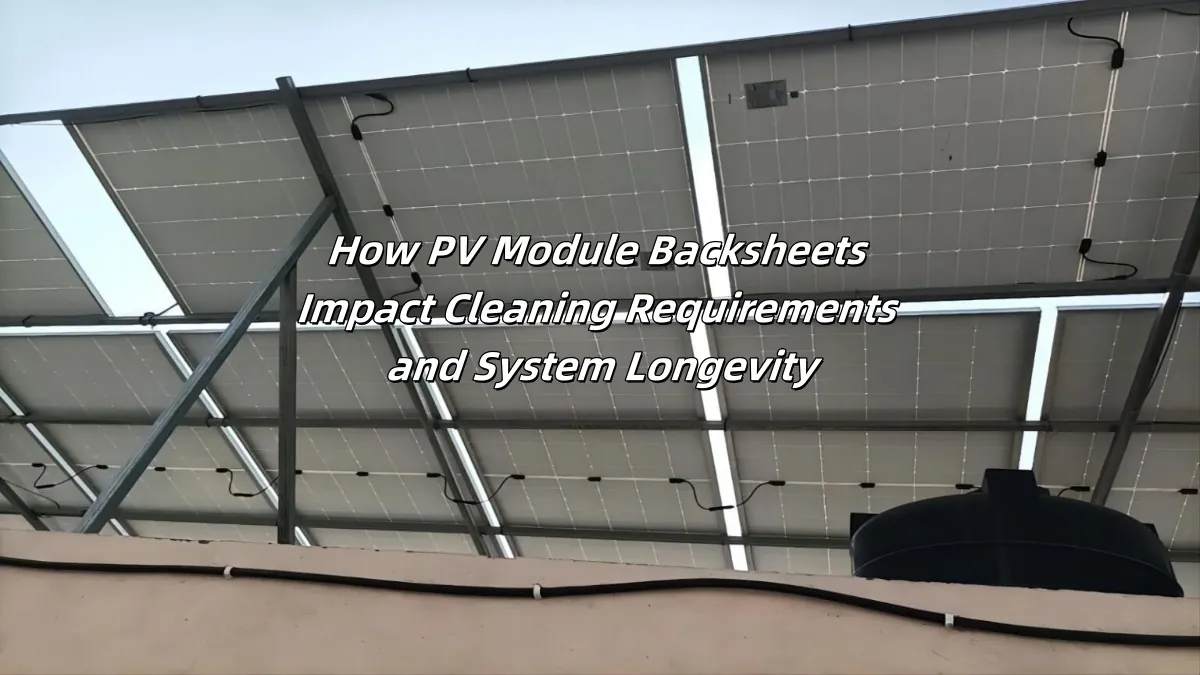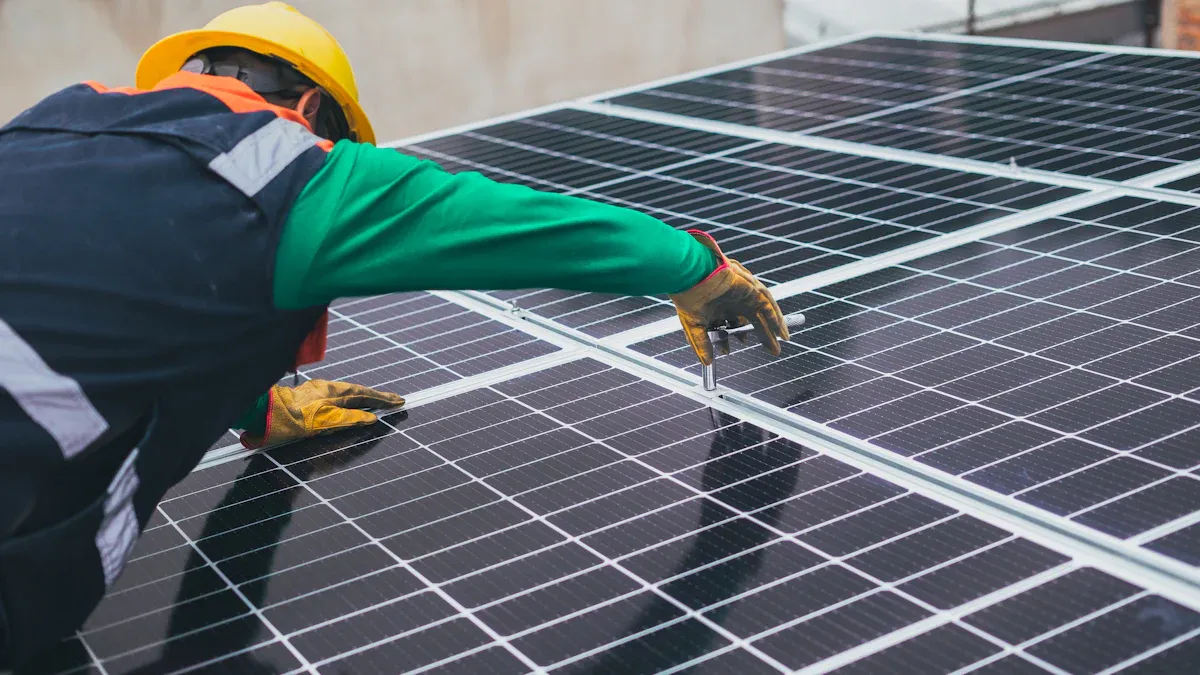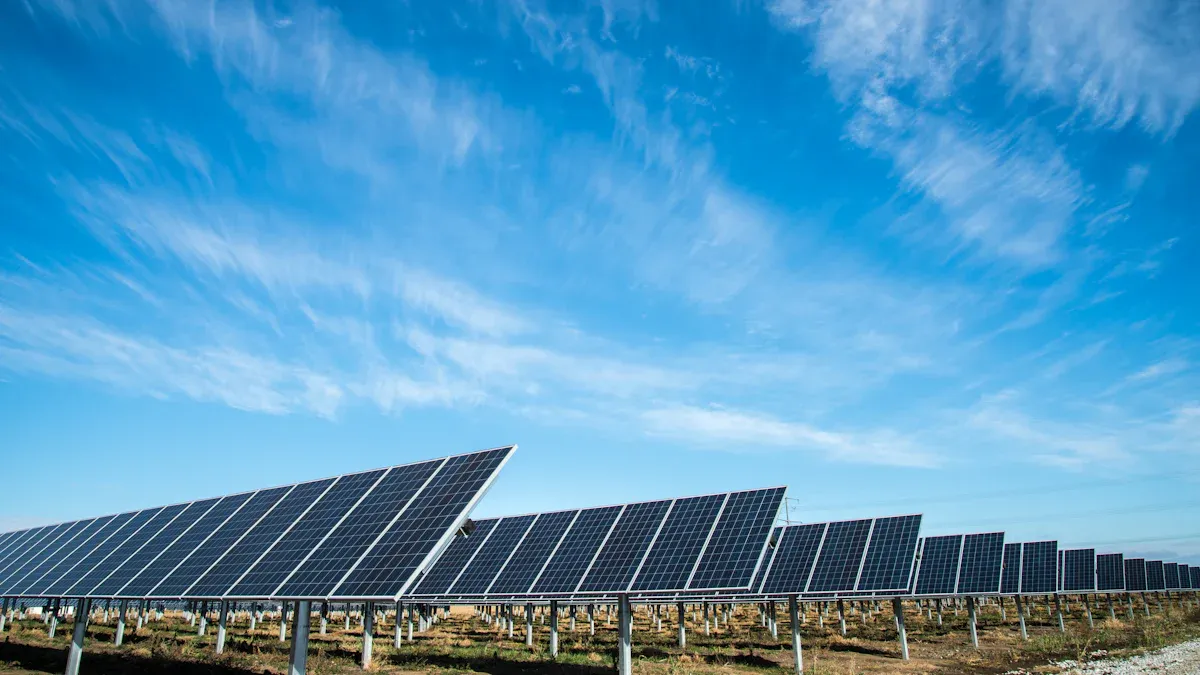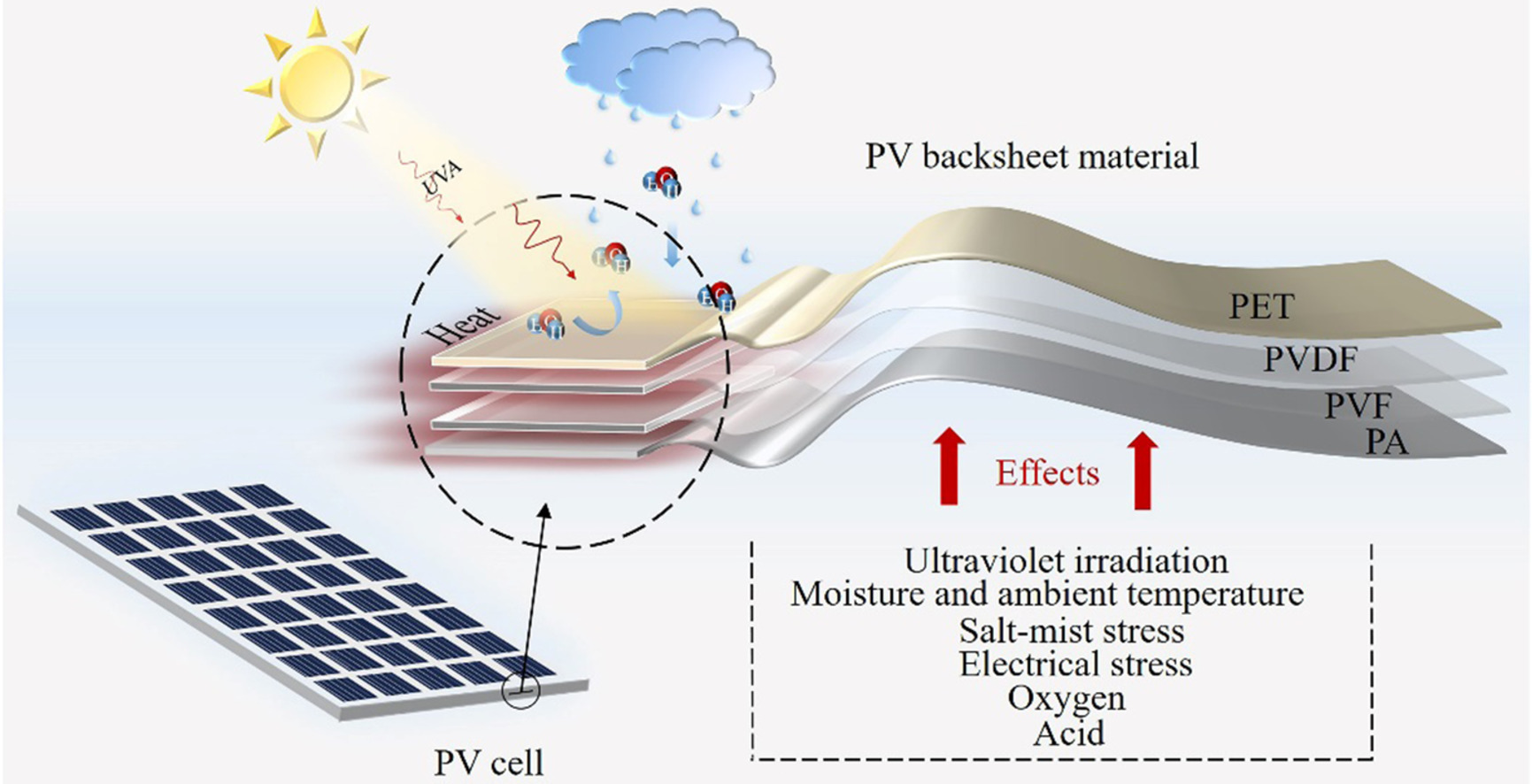+86 17727759177
inbox@terli.net
- All
- Product Name
- Product Keyword
- Product Model
- Product Summary
- Product Description
- Multi Field Search
Views: 0 Author: Site Editor Publish Time: 2025-09-16 Origin: Site
When you pick a good pv module backsheet for your solar module, you keep your money safe and do not need to clean as much. A strong solar module backsheet keeps dirt, dust, and bad weather away from your solar module. This helps your photovoltaic module last longer and stops you from fixing it a lot. Good solar module backsheets can handle heat and weather changes, so your solar module stays cool and steady. You get better results and spend less on fixing your solar pv modules when you choose the right backsheet for your solar module. A good pv module backsheet lets your solar module work for many years with less work.

Picking a good backsheet means you clean less and spend less on fixing solar modules. A tough backsheet keeps out dirt, dust, and bad weather, so solar panels work longer. Some places need special backsheets, so think about your local weather before you choose. Check the backsheet often for damage to stop big repairs and help the system last longer. Buying strong backsheets is smart because it helps the panels work better and saves money on repairs.
You may ask what a backsheet does in a solar module. The backsheet is at the back of your photovoltaic module. It works like a shield for the solar cells and wires inside. If the backsheet is weak, your module can get hurt by weather, dirt, or electricity leaks.
Here is a table that shows what a backsheet does in a photovoltaic module:
| Function | Description |
|---|---|
| Insulation | Keeps wires safe and helps your module make electricity safely. |
| Mechanical Stress Resistance | Gives support so the photovoltaic cells do not break or bend. |
| Moisture Protection | Blocks water and stops rust or damage to the inside parts. |
| UV Radiation Shielding | Stops harmful sunlight from breaking down the solar cells. |
| Temperature Stress Management | Helps control heat so your photovoltaic module does not get too hot or too cold. |
A strong backsheet helps your solar module work well for a long time. It keeps away things that can hurt it, like water, heat, and sunlight.
There are many kinds of backsheet materials you can buy. Each kind has good points and bad points. The table below shows some common choices for solar module backsheets:
| Material | Advantages | Disadvantages |
|---|---|---|
| Transparent Backsheet | Blocks almost all UV rays, resists salt and sand, easy to clean, boosts energy output | Can wear out faster in tough weather than dual glass |
| Dual Glass | Very strong, lasts long, low wear in most places | Lets in more UV rays, can be hard to clean, may rust in some environments |
You will also see fluoropolymer and non-fluoropolymer backsheets. Fluoropolymer backsheets last a long time and work well in harsh places. Non-fluoropolymer backsheets cost less and use special layers to stay strong, especially in wet areas. Some new backsheet materials, like polyolefin, are better for the environment than older types. They use less energy to make and make less pollution when recycled.
Tip: When you pick a backsheet for your photovoltaic module, think about your weather and how much cleaning you want to do. Some backsheets are easier to clean and last longer in some places.

Image Source: pexels
You want your solar module to last a long time. The backsheet quality affects how much dirt sticks to it. A good backsheet stops dust and dirt from piling up. This means you do not need to clean your solar panels often. If the backsheet is not good, more dust and dirt will gather. This can block sunlight and lower the electricity your solar module makes.
If you do not clean your solar modules enough, dust builds up. This dust makes your solar panels work less well. When this happens, the backsheet can break down faster. This is called degradation. As the backsheet gets weaker, you need to clean and fix your solar modules more. This costs you more money.
Different places need different cleaning for solar modules. Here is a table that shows how your environment changes cleaning needs:
| Environment Type | Impact on Cleaning Requirements | Key Factors Affecting Dust Accumulation |
|---|---|---|
| Desert | High dust accumulation, frequent cleaning needed | Relative humidity, rainfall, gravity |
| Coastal | Salt mist corrosion, requires specific module types | Salinity, humidity, wind patterns |
| Urban | Pollution-related dust, requires regular maintenance | Industrial pollutants, vehicular emissions |
If you live in a desert, your solar modules get dusty fast. You will need to clean them more often. In coastal areas, salt can build up and cause rust. Urban areas have more pollution, so you may see more dust from cars and factories. Picking the right backsheet for your area helps you clean less and keeps your solar module working longer.
Note: Glass-glass modules can handle high heat and sandstorms in deserts. They also resist salt mist in coastal places and heavy snow in high mountains. This means you spend less time and money cleaning and fixing your solar modules.
The sun and weather can change your solar module over time. The backsheet protects your solar cells from UV rays and bad weather. If the backsheet is weak, UV light can break it down. This is called degradation. When this happens, your solar module may not work as well. You may need to clean and fix it more.
Here are some ways UV and weather affect your solar module:
Backsheets keep solar cells safe from UV rays, which can hurt the inside parts and lower how well they work.
Over time, UV rays can change the backsheet’s color. This means the backsheet may be getting weaker and needs to be checked.
Backsheets also keep out water and dust. This helps stop rust and keeps your solar module working in all kinds of weather.
You may see different types of backsheet problems in tough places. The table below shows common issues:
| Form of Degradation | Cause of Degradation | Notes |
|---|---|---|
| Crack Initiation | Prolonged exposure to high UV radiation and temperature cycling | Leads to cracking of the top UV-blocker layer. |
| Crack Propagation | Continued exposure to harsh environmental conditions | Results in further degradation of underlying layers. |
| Chalking | Caused by UV exposure and material embrittlement | Indicates early stages of degradation, as seen in PET-2. |
| Delamination | Interaction between chalking and solar cell interconnections | Observed as a green spot on PA backsheet, indicating chemical reactions. |
If you skip regular checks or use a cheap backsheet, you risk early failure. Problems like cracks, chalking, and delamination let water and dust inside your module. This can cause rust, earth leakage, and more damage to your solar system.
Cheap materials make the backsheet weak.
Thin backsheets let in more water, which can hurt your solar module.
Skipping safety checks makes early backsheet failure more likely.
Weak backsheets cannot protect your solar module from bad weather.
You should always pick a strong backsheet for your solar module. This helps you clean less, spend less on fixing, and keeps your solar system working for many years.

Image Source: unsplash
You want your solar modules to last a long time. A high-quality backsheet gives strong protection from many kinds of damage. This keeps your solar panels working well for years. The backsheet acts like a shield. It blocks water, dust, and sunlight from getting inside your solar module. When you pick a good backsheet, you get better safety from moisture and UV rays. This helps your solar panels keep working and stay reliable.
Here is a table that shows how a good backsheet protects your solar modules:
| Evidence Description | Explanation |
|---|---|
| Backsheets act as a moisture barrier and environmental shield | This job is important for keeping PV modules working in tough places, stopping damage from water and UV rays. |
| Material choice impacts durability | Good materials like polyvinyl fluoride (PVF) do not break down as fast from water or UV, so they last longer. |
| Environmental stresses lead to degradation | Things like heat, wetness, and UV rays slowly hurt weak materials, which can make the module fail. |
You can see that a good backsheet gives better protection in hard weather. It keeps your solar modules safe from rain, heat, and strong sunlight. This helps your solar panels last longer.
Note: If you see yellow, cracks, or peeling on your backsheet, your solar module may not be safe. These signs mean the backsheet is breaking. You should check your modules often to keep them safe.
A good backsheet also gives electrical insulation. This stops electricity from leaking out and keeps your solar system safe. If the backsheet breaks, you could get shocked and your module may not work well. You want to stop these problems so your solar system lasts a long time.
You can spend less on fixing your solar modules if you use a good backsheet. Good backsheets need less cleaning and fewer repairs. They keep out water and dust, so you do not have to fix your solar modules as much. This saves you money and time over the years.
Here are some ways a good backsheet helps with maintenance and inspection:
Backsheets give electrical insulation and protect from water and UV light.
Signs of backsheet problems are yellowing, cracking, and delamination, which can make your solar panels work less and even stop working.
The backsheet must stay strong to stop shock hazards from leaking electricity.
You should look at your solar modules for any backsheet damage. If you find problems early, you can fix them before they get worse. This keeps your solar modules working and helps them last longer.
The strength and safety of a good backsheet help stop failures. Strong backsheets keep water out. They also keep the solar cells safe from rust and electricity leaks. If you use a weak backsheet, you may have more problems and need more repairs.
Here is a table that shows how new backsheet technology helps your solar modules last longer:
| Evidence | Description |
|---|---|
| Multilayer polymers | These are used a lot and make backsheets stronger and better at blocking UV for high-efficiency PV modules. |
| Fluoropolymer coatings | These make backsheets last longer, so you spend less on repairs. |
| Self-healing coatings | These fix small damages by themselves, so you pay up to 30% less for repairs and your panels last 5-7 years longer. |
| Weather-proof systems | Special polymer covers protect from water and heat changes, so panels last longer in wet places. |
You can see that new materials and coatings help your solar modules last longer. These changes give you better protection and reliability. You spend less on repairs and cleaning. Your solar system works better for more years.
Tip: Pick a backsheet with strong mechanical and electrical properties. This will help your solar modules last up to 50 years. You will get better reliability and lower costs over time.
If you use a good backsheet, your solar modules can avoid problems like cracking, yellowing, and delamination. You also stop failures from water, heat, and UV rays. This means your solar system will last longer and work better.

When you choose a backsheet for your solar modules, you want the best protection and performance. Look for these key features:
Environmental conditions: Pick a backsheet that matches your local weather. Some places have strong sun, heavy rain, or big temperature changes.
Durability and longevity: Check how long the backsheet is expected to last. A strong backsheet means your solar panels work well for many years.
Application type: Think about where you will use your solar modules. Large solar farms and home rooftops may need different backsheets.
Weatherability: Make sure the backsheet can handle storms, heat, and cold without breaking down.
Electric insulation: The backsheet should stop electricity from leaking out. This keeps your solar system safe.
Mechanical power: The backsheet must protect the solar cells from bending or breaking.
Adhesion: Good backsheets stick well to other parts. This stops layers from peeling apart.
Tip: A backsheet with lasting durability will help your solar panels stay strong and safe in tough weather.
You want to make a smart choice when picking a backsheet for your solar modules. Here are some tips to help you:
Check certifications and standards. Use this table to see what to look for:
| Certification/Standard | Description |
|---|---|
| BIS Certificate | Follows Indian standards |
| IEC | Meets global safety and quality rules |
| UKCA Marking | Approved for use in the UK |
| CE Mark | Accepted in Europe |
| UL Marking | Tested for safety in the US |
Ask about extra tests. Some groups, like CSA Group and NREL, do special tests to check how well backsheets last over time.
Compare long-term reliability. Some backsheets may pass basic tests but still crack or fail after years in the sun. If a backsheet fails, you may lose money and face warranty problems.
Review warranty terms. High-quality backsheets often come with 20-25 year warranties. Lower quality backsheets may have the same warranty, but claims are more likely to be denied.
Think about cost and risk. Cheaper backsheets may save money now, but can lead to bigger costs if they fail early.
Note: Choosing the right backsheet helps your solar system last longer and saves you money on repairs.
Picking the right PV module backsheet means you clean less. It also helps your solar system work for more years. If you buy a high-quality backsheet, you get some good things:
Your panels last longer because they resist water better.
New materials help you save money as time goes on.
Bio-sustainable choices like Nylon 11 make your system more reliable.
You should always pick backsheets that are strong. This smart choice keeps your solar system safe and working well for a long time.
You should clean your solar panels two to four times each year. If you live in a dusty or coastal area, you may need to clean them more often. Check your panels for dirt or buildup every few months.
Look for these signs:
Yellowing or color change
Cracks or peeling
Water spots or rust
If you see these, your backsheet may need replacement soon.
Yes. A strong backsheet keeps out water, dust, and UV rays. You will clean your panels less often and spend less on repairs. This helps you save money over time.
No. Some backsheets work better in hot, wet, or salty places. You should choose a backsheet that matches your local weather. Ask your installer for advice before you buy.
Double-Side Glass Technology in PV Systems: Benefits, Performance, and Installation Considerations
Shingled Technology vs. Half-Cut Cells: Which Solar Panel Design Delivers Superior Performance?
SMBB Technology in Half-Cut Solar Cells: How Smart Multi-Busbar Design Improves Power Output
Amorphous Silicon PV Cells: Applications, Advantages, and Limitations of This Thin-Film Technology
From Cell to Module: The Manufacturing Process and Material Considerations in PV Production